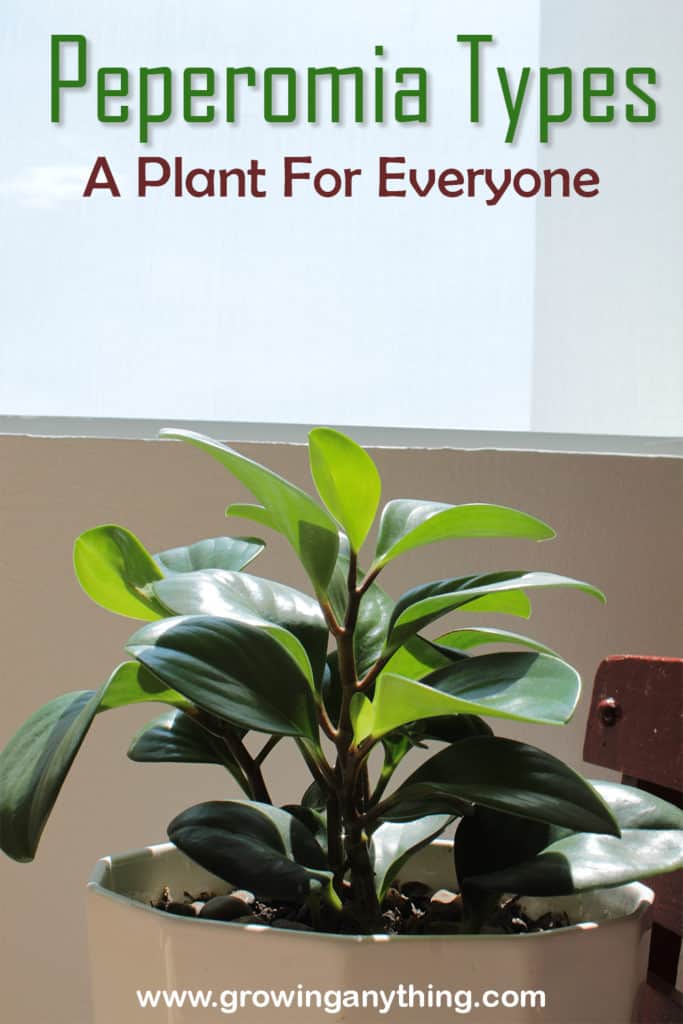42 Difference Types of Peperomia
Because there are so many Peperomia types, it is hard to pick only one! That is why I prepared a list of more than 50 Peperomia varieties for you to check and pick your favorites!
Peperomia is a great houseplant because of its compact size and versatility. It looks great as a tabletop decoration or on the windowsill.
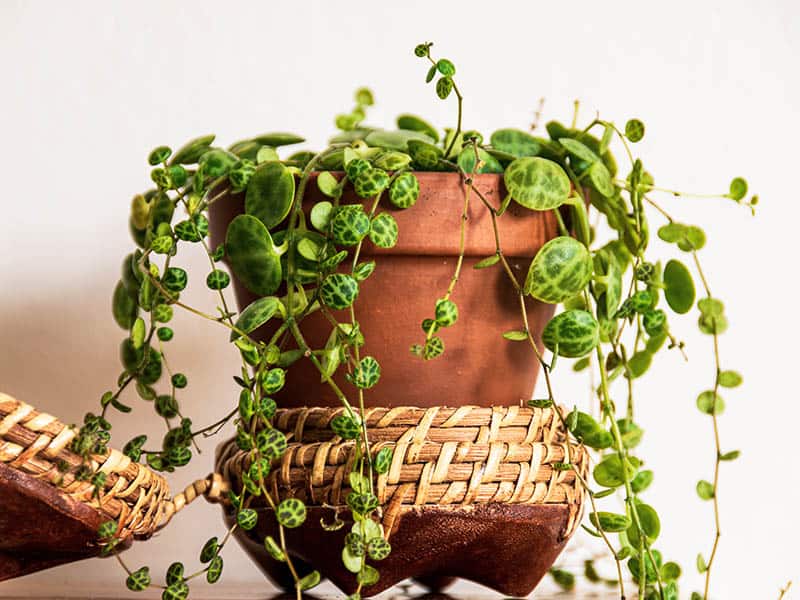
Some people also like to collect Peperomias, and if you are one of those people, you can check the list to see what is missing out in your collection.
Typically, Peperomias don’t need too much care. Most of them thrive in average indoor conditions and can adapt to different lighting. Below are my favorite types of Peperomia with a little information on care and plant itself!
#1 Elongata
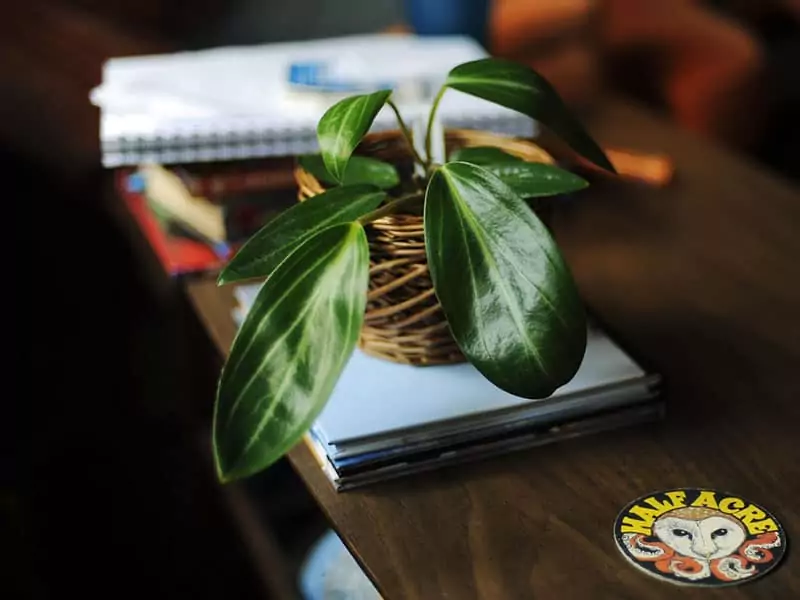
Peperomia Elongata isn’t a typical and easy-to-find Peperomia. It features large and glossy, evergreen foliage with light veins.
When caring for Elongata Peperomia, allow the soil to dry between two waterings. It will help the plant grow to its full potential – around 12 inches. The plant can adapt to light shade conditions.
#2 Verschaffeltii
Peperomia Verschaffeltii is a dwarf variety of other, more common Peperomia type – Watermelon. The Verschaffeltii remains only six inches tall and is easy to grow. The plant needs protection from cold and draft. Otherwise, it can survive in different indoor conditions. It is best known for the beautiful leaves with a pattern like a watermelon!
#3 Caperata
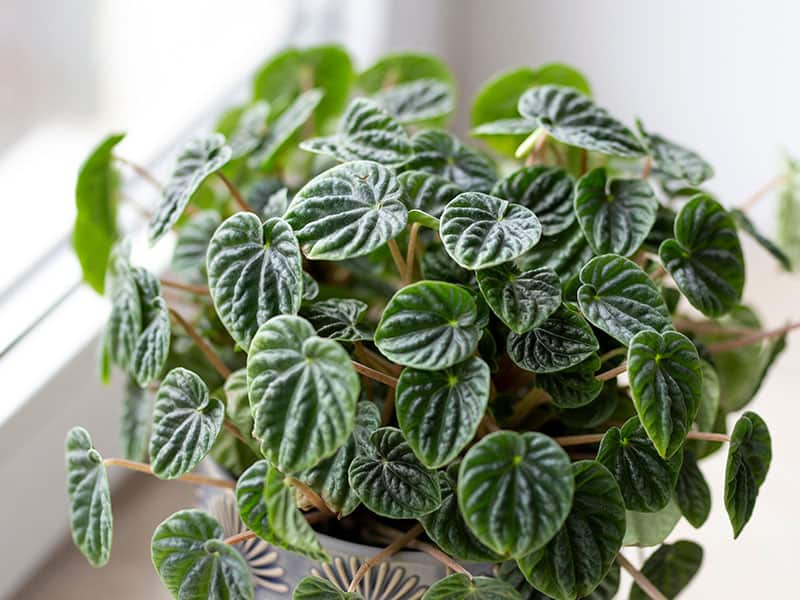
Caperata Peperomia is native to Brazil. The plant features short stems and heart-shaped foliage. Sometimes, the green leaves get light red veins.
The plant is almost problem-free as long as you ensure well-draining soil and don’t overwater the plant.
You should stop watering the plant if the leaves and stems become dark!
Simple way to propagate Peperomia Caperata.
#4 Quadrangularis
You can grow Peperomia Quadrangularis as a trailing evergreen plant in containers or as a ground cover. It features small, oval leaves with light veins. The plant blooms, but the flowers aren’t very showy.
Most people grow the plant for the lovely green foliage.
Quadrangularis needs very little watering and moderate exposure to sunlight.
#5 Dolabriformis
Dolabriformis is one of the most popular types of Peperomia. Because it is a succulent plant, you don’t have to worry about watering. The plant only needs occasional moisture to remain healthy.
You can grow it indoors in warm and humid rooms, or outdoors if you live in a tropical climate.
#6 Tetragona
Tetragona comes from South America and is one of the best Peperomia varieties for shade. The foliage is almond-shaped and has stripes of dark and light green.
The multi-shaded leaves increase the visual interest of the plant.
Tetragona is a semi-succulent plant, and it can be left to dry out between waterings.
#7 Rubella
Peperomia Rubella can be one of the most challenging Peperomias to find. The plant is beautiful with stunning red stems and true green, fleshy foliage. It remains compact and can be trained to grow upwards on the supporting structures.
Rubella needs consistent moisture, but soggy soil can kill the plant. Therefore, the soil needs to be well-draining.
Additionally, Rubella needs high humidity, so mist it regularly!
#8 Incana
Incana Peperomia comes from Brazil and has several common names. You may know it as Felted Peperomia.
It is an evergreen plant, with heart-shaped foliage covered with tiny, white fuzz hairs. The hair helps the plant to survive harsh conditions – extreme warm temperatures and drought.
Incana is a slow grower and doesn’t get taller than 12 inches.
Caring for semi-succulent Peperomia Incana.
#9 Ferreyrae
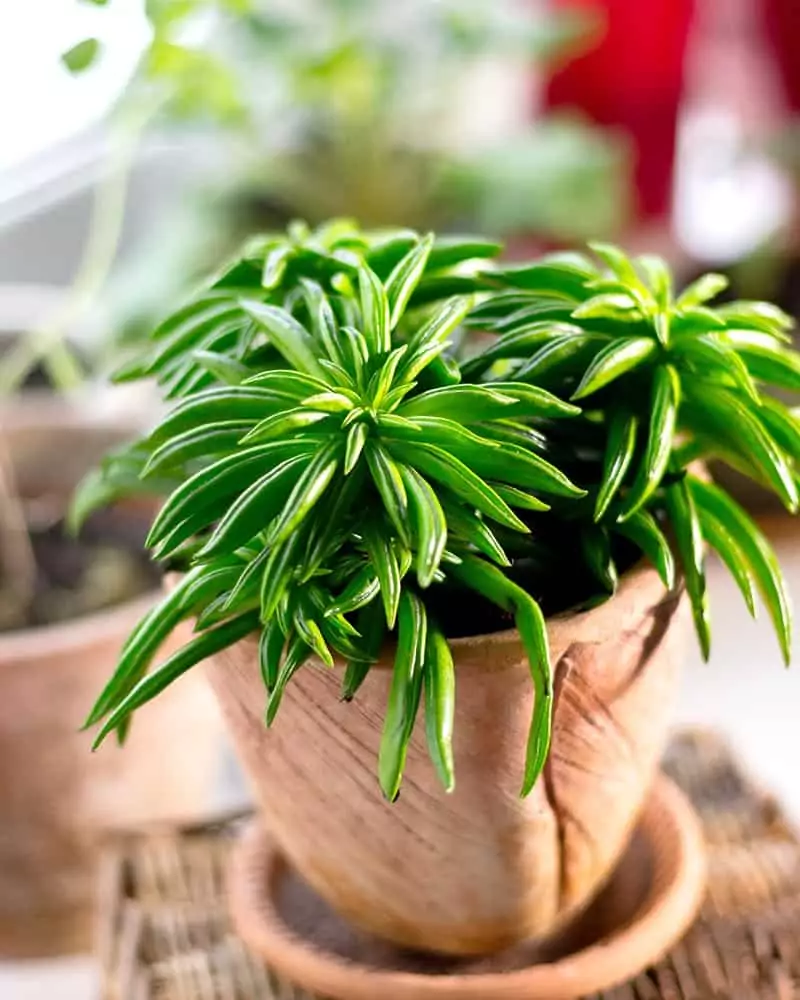
The non-demanding Happy Bean Peperomia or Ferreyrae is a great houseplant for beginners. The plant grows best when left alone with occasional watering. It grows well in low and medium indoor humidity conditions.
You can find a nice, sunny location for Ferreyrae Peperomia and watch your plant thrive.
Check out more tips for growing Happy Bean Peperomia.
#10 Clusiifolia
Clusiifolia is one of the prettiest Peperomia. The plant has variegated leaves with creamy yellow and pink. The more exposed the plant is to sunlight, the brighter the pink and yellow hue will be.
It is native to South American and can grow well in standard cactus potting mix. Clusiifolia is easy to repot as well.
The plant needs moderately strong fertilizer to establish, and it is best to apply it during the growing season.
#11 Rotundifolia
Peperomia Rotundifolia is also known as the Trailing Jade plant. It features round foliage that transforms into trailing branches. Trailing Jade remains a compact plant, and looks best on the shelves, where it can slowly climb. Rotundifolia is also easy to grow under fluorescent light, so it is a perfect office plant.
#12 Polybotrya
Peperomia Polybotrya or a Raindrop Peperomia has raindrops-shaped glossy and fleshy leaves. It is a versatile plant that can be grown indoors and outdoors!
The plant is non-demanding and grows best near the window where it can receive gentle morning sun. You can prune Polybotrya to keep it compact.
#13 Hope
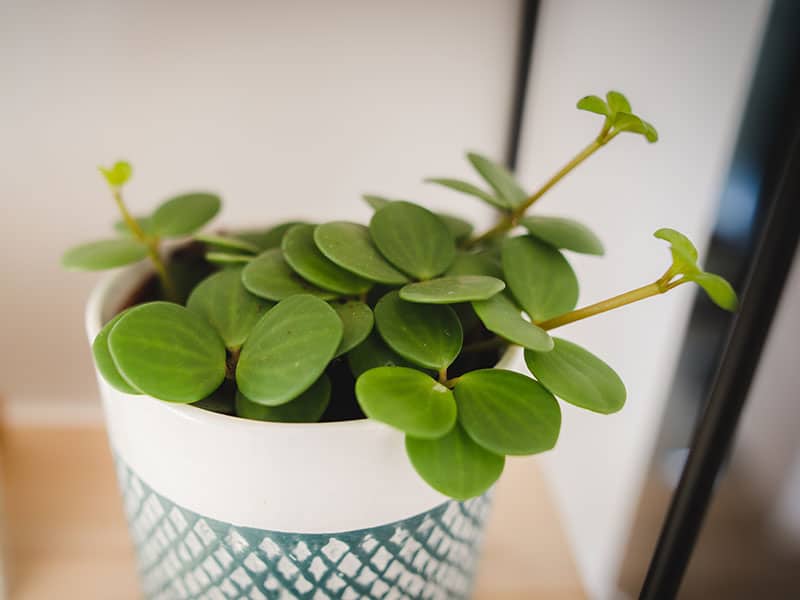
Hope Peperomia is a hybrid plant with a vining growth habit. The plant develops charming little leaves on thin and resilient stems. Peperomia Hope is an excellent house-warming gift for beginners.
The plant can live long in average indoor conditions with occasional watering and filtered sunlight.
It is also a pet-friendly plant!
If you are worried about the toxicity of certain houseplants, do check the list of best pet-friendly plants to grow in your home!
Practical tips for growing Peperomia Hope.
#14 Graveolens
Graveolens is a tiny Peperomia succulent, endemic to Ecuador. It remains ten inches tall and features reddish stems with true-green thick leaves.
The plant develops simple, yellow-white stems without any aroma. The flowers don’t stand out very well, but alongside ornamental leaves, they improve the look of the plant.
Graveolens Peperomia grows best under bright sunlight.
#15 Prostrata
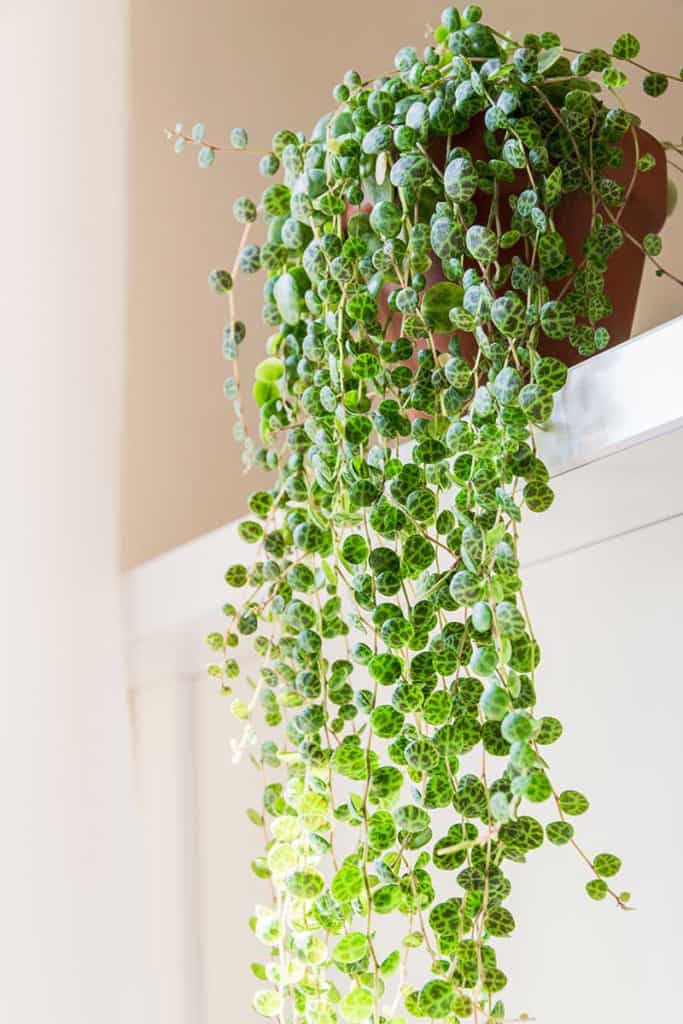
Peperomia Prostrata looks best when planted in hanging baskets. Also, the tiny leaves are delicate and prone to falling to the touch, so keeping them away from hand reach will help Prostrata to survive longer.
Water it sparingly, only when the top few inches of the plant get dry.
Moreover, the plant develops roots slowly. So, you want to have to repot Prostrata Peperomia for years!
#16 Obtusifolia
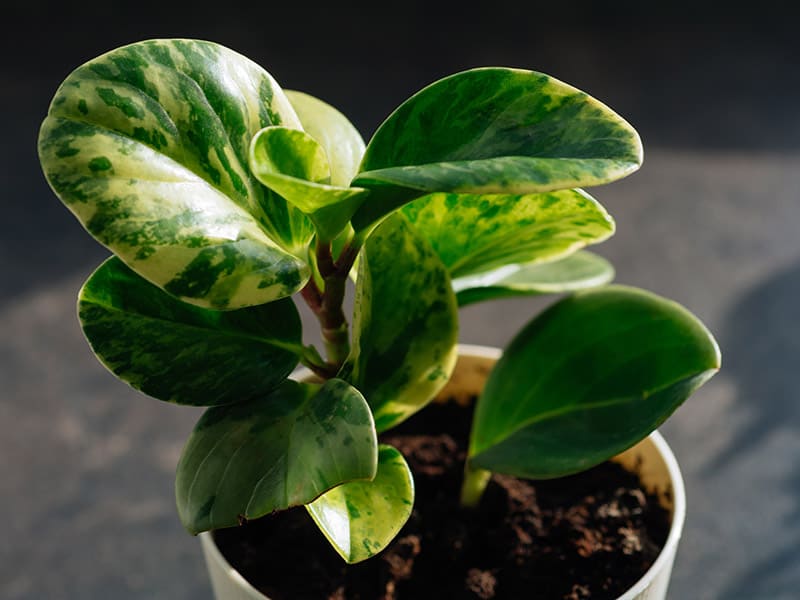
Obtusifolia or Baby rubber plant is an excellent indoor plant. But, to keep the plant healthy, you’ll need to find the optimal balance between sunlight and watering. The more light the plant receives, the higher the amount of water it needs.
Sometimes, when exposed to bright light, the Peperomia Obtusifolia develops bright yellow variegation on the leaves!
Should you prune Peperomia Obtusifolia.
#17 Perciliata
Fagerlindii or Peperomia Perciliata features a tropical appearance and non-demanding nature. The plant has purplish stems with round, dark green leaves in a succulent-like form.
It is sensitive to sudden temperature changes to keep it away from the AC unit or radiators. As far as the humidity goes, Perciliata Peperomia tolerates all conditions!
#18 Watermelon
Watermelon Peperomia is an attractive and popular houseplant. The leaves have a watermelon-like colorful pattern and silverish veins. Watermelon Peperomia might not be a perfect Peperomia to start with because it can be tricky to grow. You should never overwater the plant because it can kill her.
Additionally, put the plant in a room with high humidity and expose it to bright sunlight. However, filtered light is the best, because direct light can burn the foliage.
#19 Verticillata
Red Log Peperomia or Verticillata type is a colorful, evergreen, low-demanding houseplant. The undersides of the leaves and the stems are burgundy red, which gives the plant its colorful appearance.
It is a slow-growing plant with lovely white flowers which develop in the spring! Red Log Peperomia develops best in warm and humid environments, so you can keep it in the bathroom.
#20 Orba
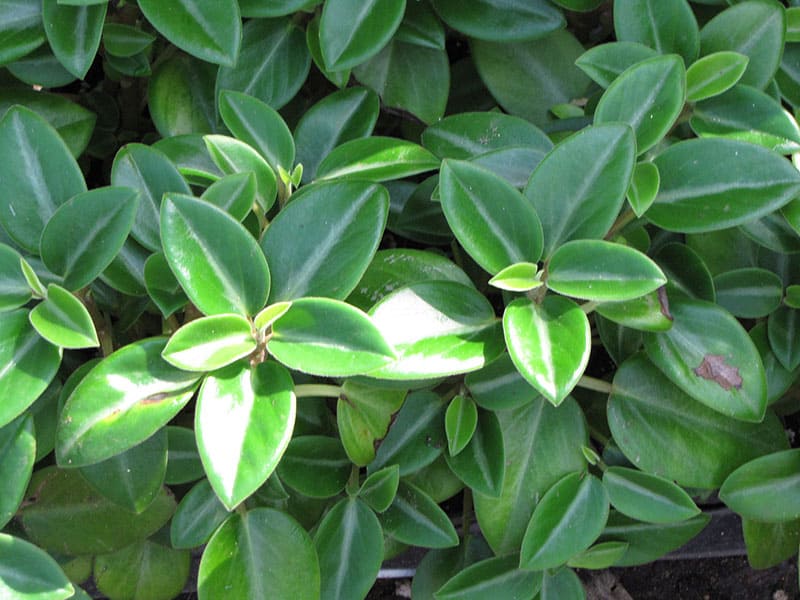
Peperomia Orba carries the name Teardrop Peperomia and has a reputation as an excellent indoor plant. It usually grows under six inches, but it can spread more than that.
Orba needs medium light and can suffer from too much sun or too little. If you place it near a bright window, use curtains to filter the light. The ideal location is a north-facing window sill!
#21 Serpens
Serpens Peperomia thrives in medium and filtered light. It is a tropical plant, so it loves humidity and warm temperatures. To increase humidity, mist the plant regularly or keep it near wet gravel. Peperomia Serpens need well-draining soil and an attentive owner. Instead of having a fixed watering schedule, check the top layer of the soil to see if it is dry. Then, water the plant as it needs!
#22 Axillaris
Peperomia Axillaris is a miniature succulent that loves light and has an interesting branching pattern! It is a true gem for Peperomia collectors, but you might struggle to find it in nurseries.
Bright green leaves are shaped like tea pods and develop in a shrub-like form.
#23 Ruby Cascade
Peperomia Ruby Cascade is a charming semi-succulent plant, best known for its ruby-red foliage. The plant may be tricky to grow.
The trick you can try is to soak your Peperomia in water thoroughly, and then let the plant drain. Choosing the right-size pot will help with the drainage!
Don’t forget to use the all-purpose fertilizer for your Ruby Cascade plant!
#24 Kimnachii
Peperomia Kimnachii looks nothing like other Peperomias. It is a small succulent with foliage creating star-shaped forms. Kimnachii Peperomia rarely blooms indoors. In Bolivia, the plant’s native habitat, Kimnachii develops small white-colored flowers with a musty scent!
The plant needs a lot of sunlight and has moderate watering needs.
#25 Albovittata
Albovittata is a trendy Peperomia grown specifically for ornamental leaves. The plant likes loamy soil and humidity over 50%. You can also grow via the soilless method. Sparse watering and a lot of sunlight are crucial for the beautiful leaves to remain healthy!
#26 Asperula
If you prefer a shrubby plant, pick Asperula Peperomia! If you live in zones from eight to ten, you can grow it outdoors as well. In every other zone, Asperula Peperomia is easy to grow indoors.
The plant features thick stems with creamy white flowers. Also, Asperula features matte green surfaces on the leaves’ undersides!
#27 Fagerlindii
Have you heard about the Creeping Hearts plant? It is actually the Peperomia type, variety Fagerlindii. It is a statement plant with purple stems and true green foliage. Because it is a succulent plant, Fagerlindii Peperomia retains moisture, so you don’t need to water it very often. It is native to the coastal areas of Ecuador.
#28 Hoffmannii
Hoffmannii Peperomia is a spectacular plant that develops showy clusters of tiny leaves. The plant is stunningly green and compact. You can use it as a terrarium plant or as a ground cover if you live in a warm climate. It develops small greenish flowers, which don’t stand against green foliage. Instead, leaves and blooms blend together into one structure.
When grown in a hanging pot, Hoffmannii Peperomia develops a cascade form. It is native to South and Central America.
#29 Japonica
Japonica is a semi-succulent and low-maintenance plant. Ensure a lot of bright light to plant, but avoid exposing the plant to direct harsh afternoon sun.
It develops emerald-green foliage, which looks even prettier when exposed to high humidity!
Determine if you are making any common mistakes related to Peperomia care!
#30 Antoniana
Peperomia Antoniana is a miniature tropical succulent that comes from Peru! The succulent is easily recognizable by dark leaves speckled with glossy white dots. Also, new growth develops in a beautiful orange-red shade and slowly darkens as the plant matures.
# 31 Monticola
Peperomia Monticola is a cold-sensitive perennial plant that grows best when fully exposed to the sun. But, the plant may adapt to dappled shade.
It is a tiny plant, which grows between four and eight inches. Monticola is resistant to drought and can tolerate different humidity conditions. But, soggy soil can kill the plant, so pick a pot with large drainage holes.
#32 Maculosa
Maculosa or Peperomia Cilantro is sometimes called the Dwarf Pepper plant. It is one of the slowest growing Peperomia varieties, and it needs around ten years to reach maturity.
Maculosa develops trailing stems and glossy variegated foliage. The dark green leaves feature bright white veins, which give the plant a stunning appearance year-round. The blooming season is spring, but the plant is exclusively grown for foliage visual interest.
#33 Trinervis
Peperomia Trinervis, an evergreen creeper, is an easy-care houseplant that prefers partial shade. The foliage resembles a marble effect, with gray parallel and irregular veins. They stand out against dark green, glossy leaf surfaces.
Trinervis is an unusual and rare variety, which might be difficult to track down. If your Trinervis Peperomia becomes leggy, move it to the brighter spot and it should fix the problem.
#34 Nivalis
Peperomia Nivalis is a well-rounded plant with beautiful foliage and lovely fragrant blooms. Luckily, Nivalis is a fuss-free plant that needs well-draining soil. You can use standard cacti-mix and add perlite and bark to improve drainage.
Because Nivalis Peperomia doesn’t need too much bright light, it is a perfect plant for dark corners in your home. It makes a magnificent gift for beginner gardeners!
#35 Hutchisonii
Hutchisonii Peperomia is a rare variety, and on the wish list for many plant collectors. It develops a woody stem with textured leaves. It is native to Peru.
Hutchisonii is succulent, so it grows well without a lot of water and complex care. Hutchisonii isn’t an iconic Peperomia, but if you can get your hands on it, don’t let it go!
Learn how to propagate any type of Peperomia so you can distribute the rare varieties further!
#36 Metallica
People grow Peperomia Metallica for the unusual foliage. The leaves are dark green with a purple undertone. Interestingly, the undersides of the leaves turn pink. If you use fertilizer during the growing season, spring and summer, you can boost the brightness of the leaf colors.
Metallica is also one of the smallest Peperomias out there. This lovely plant is native to Columbia and one of the easiest houseplants to grow!
#37 Fraseri
Fraseri Peperomia is often called Flowering Peperomia because of the beautiful white flowers which appear in summer. The flowers are slightly fragrant and look like the Bottlebrush plant blooms.
Fraseri Peperomia is easy to grow, as long as you ensure excellent drainage and filtered light.
The plant is sensitive to dry air, so keeping humidity near the plant during summer will be beneficial.
Mistakes to avoid when repotting Peperomia.
#38 Caespitosa
Caespitosa or Xanadu is a lovely plant, native to the USA. It is one of the epiphyte Peperomia varieties, which means it needs to grow on a woody structure to get nutrients and thrive. The plant features thick leaves.
Interestingly, when they first appear the leaves are round, and they become more elongated and pointed as the plant matures.
Discover more about epiphyte plants, including caring tips.
#39 Eburnea
Peperomia Eburnea needs high humidity and only little light, alongside warm temperatures. These conditions are similar to the ones in the Eburnea native area, where these plants grow in tropical woods underneath and around trees.
Also, Eburnea needs frequent fertilization. Ideally, use a purpose-fertilizer twice a month during the growing season.
#40 Bangroana
Bangroana Peperomia is a beautiful creeping plant that develops lovely elliptical leaves. The evergreen foliage is stiff and thick and stays good-looking year-round.
It looks similar to Rotundifolia, but Bangroana is less common and slightly trickier to grow. The plant is native to tropical Africa and adapted to indoor growing conditions.
#41 Pereskiifolia
Pereskiifolia is Peperomia coming from Venezuela. The plant features lush and bushy growing habits with stunning green foliage and deep-red stems. As a houseplant, Pereskiifolia is excellent. It thrives near a sunny window and needs occasional, but continuous use of fertilizer.
Pereskiifolia can be displayed as a single specimen, or as part of the larger plant display.
#42 Bamboo Stalks
Bamboo Stalks Peperomia is a rare variety, which develops thick, bamboo-like stems. It is a collector’s gem!
The plant grows best in partial shade when exposed to the morning sun. It is a cold-sensitive plant, which should be protected when the temperatures drop below 50 degrees Fahrenheit.
Also, the plant is sensitive to overwatering. To prevent water damage, let the soil dry completely between two waterings.
Peperomias, Common Plants With High Visual Impact
Most known Peperomias come from Central and South America, but some African varieties are true jewels in every plant collection!
They aren’t demanding plants to grow indoors. The hardest part is finding the right spot. But if you know about plant preferences, you shouldn’t struggle too much.
Which Peperomia is your top pick? I would like to get my hands on Trinervis Peperomia, but I also like Ruby Cascade.
Come back for more gardening articles and inspiration!
